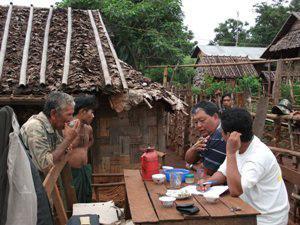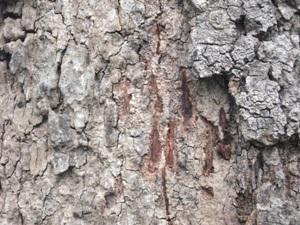Thant Zaw Soe
The main aim of the project is to assess the habitat and Human-Asiatic Black Bear conflict to find out effective solutions for minimizing human-bear conflict.

Interview with farm owners.
Asiatic Black Bear(Ursus thibetanus) is listed in IUCN red list as vulnerable. It is also listed on Appendix I of the Convention on the Trade in Endangered Species of Wild Fauna and Flora (CITES). It is distributed around the hilly and mountainous region of Myanmar.

Claw marks of Asiatic Black Bear.
Threats to the species include habitat disturbances, persecution by local people in the assumption that it kills the domestic livestock and it raids the cultivated crop.
People need forest resources to survive and ABB also need their habitat well to live long. As the expansion of human land use, crop raiding by ABB is common in Mauk Mai region, Southern Shan State of Myanmar. Human and wildlife conflict has always been exaggerated by the agricultural crop loss and rarely by human mauling. As main occupation of the local people is agricultural crop production, when they loss their crop production, they have bellyful of the existence of ABB and they often kill ABB in retaliation or to prevent future conflicts. So, human-Bear conflict is one of the major threats to survival of ABB. To find out solution for minimizing the human-bear conflict, we need to determine the status of Asiatic Black Bear and their habitat, assess the nature and frequency of human-bear conflicts in the region, and understand local communities’ perception of the problems.
With this project, we will summarize the nature, extent and location of the Human-Asiatic Black bear conflict situations, local residents 'perception of the problems and status and distribution of Asiatic Black bear and their habitat. The effective strategies for minimizing human-bear conflict will only be designed when we have the information on the species and conflicts in hand. The data and the information of this project can be used as a baseline for any governmental or nongovernmental initiative aimed to manage the human-bear conflict humanely in the region. Therefore, I believe that this project will translate into a long term model for minimizing human-bear conflict in the region.